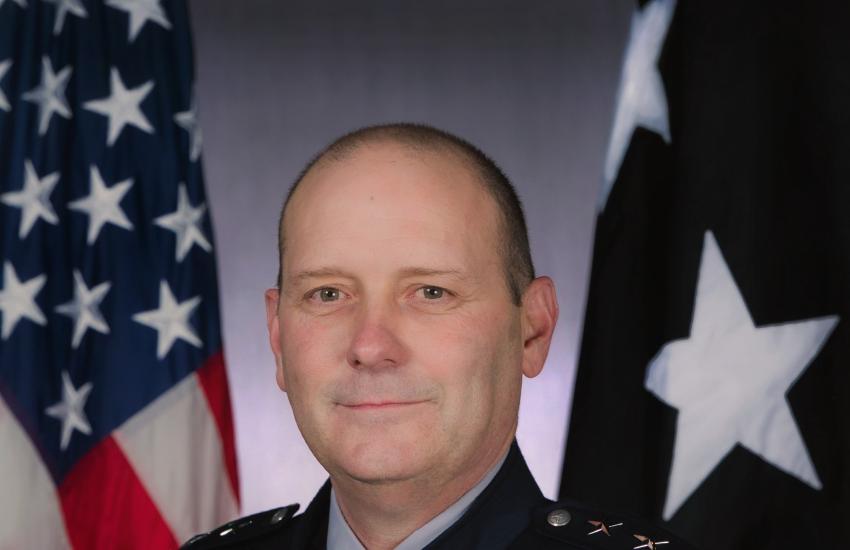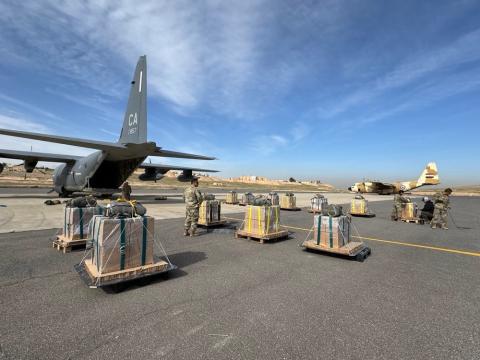Project Convergence Breaks More Ground
The Department of Defense is another step closer to combined joint all-domain command and control (CJADC2), with the successful beginning of its Project Convergence Capstone 4 (PC-C4) event, held at Camp Pendleton and Fort Irwin, California, from February 23 to March 20, 2024.
The Army Futures Command has hosted Project Convergence since 2020, with the effort quickly becoming a U.S. Department of Defense-wide and allied nation effort. The Army’s event started by examining how to reduce the time to identify and shoot on a target and has quickly grown to demonstrate capabilities to create a common operational picture and integrate data from all domains—air, sea, land, cyber and space—across many nations and across a huge warfighting region.
The other Five Eyes nations, in addition to the United States—the United Kingdom, Australia, Canada, New Zealand—as well as France and Japan participated in this exercise alongside the U.S. Army, Navy, Air Force, Marine Corps and Space Force.
So far at PC-C4, the military has demonstrated and experimented with technologies across joint force and allied nation command and control (C2) and achieved “unprecedented levels” of data sharing in an Indo-Pacific area of responsibility scenario, according to leaders who spoke to reporters during an in-person and virtual press conference on March 5.
The scenario also featured a greater complexity of simulated threats and risks, going up against an imaged, aggressive adversary in a contested environment. They “increased the threat envelope to 10 times what we did last year,” said Lt. Gen. Ross Coffman, Army Futures Command deputy commanding general and PC-C4 experiment director.
Deputy Secretary of Defense Kathleen Hicks, who signed the Department of Defense’s JADC2 Implementation Plan in 2022, traveled to the event to see the progress of integrating fires, C2, contested logistics abilities and multinational militaries. Air Force Maj. Gen. Pat Ryder, the Pentagon’s press secretary, noted last week to reporters at the Pentagon that the Deputy Secretary’s visit would look at how the experimentation was going and the challenges of implementing CJADC-2 across the Joint Force. The fact that PC-C4 was a theater-level event is key for the Department of Defense’s evolution of CJADC2.
The Defense Department is examining how to “operate at a theater-level versus a tactical level,” using CJADC2 “in a way that enables us to better synchronize and synthesize our operations when it comes to operating as a Joint Force,” Gen. Ryder stated.
From an Air and Space Force view—as they build out the Department of the Air Force Battle Network—PC-C4 demonstrates how the services continue to modernize C2 for decision advantage, said Brig. Gen. Daniel Clayton, director, Advanced Battle Management System (ABMS) Cross-Functional Team.
“Seven years ago, there were a lot of lightning bolts on charts,” Gen. Clayton said. “Those days are over. We're actually delivering integrated by design today…. And the amazing part about PC-C4 is the number of allies and partners and the fact that across the joint force we're working together. It's also important to note that the stuff that we're working on in the Department of the Air Force is integrated by design, so it is the Air Force and the Space Force working together from the very beginning.”
During PC-C4, the service is relying on four of its 16 fielded tactical operations center-light (TAC-L) kits, which provide the basic building blocks for its C2 infrastructure around the world.
“Capstone 4 has given us the venue to do large-scale experimentation in the context of bringing in multiple TAC-Ls into play simultaneously,” explained Brig. Gen. Luke Cropsey, program executive officer for Command, Control, Communications and Battle Management. “And then understanding how those individual units basically come on and offline and how well they mesh back into that broader network that is being created across the joint force so that we understand better where we need to take the next incremental capability.”
Because the Department of the Air Force is already proceeding with a program of record to field ABMS, CJADC2 and Battle Network capabilities under a unique acquisition structure, PC-C4 offered the service the opportunity to closely examine where they will go next with the already-fielded TAC-L and other capabilities, and how they will continue to scale to modernize C2.
“Where we're at today is with a program of record that is actually putting capability into the field and that we are using these very specific venues like PC-C4 to go in and do a very specific hypothesis test around what kind of capabilities go into that next increment,” Gen. Cropsey noted. “Try it out, wring it out, put the operational teams in place, put it into a joint and coalition context, and then make a decision about okay, what needs to go on that next increment before we put money on a barrel head. That's where we are.”
In addition at PC-C4, the Air Force is using two of its already fielded cloud-based command and control (CBC2) software applications installed at the Eastern Air Defense Sector in October and at the Canadian Air Defense Sector in February, which are connected to the TAC-Ls.
“I believe this is our third iteration of participating in the Project Convergence Capstone event, and so we are excited that we are able to put on display the TAC-light and the CBC2 capabilities and have lots of different operators to start testing with this actually fielded capability,” Gen. Clayton said. “This is not an experiment for us. The operators are now able to get out in the field and then come back and tell us ‘hey, this worked, this didn't work,’ and then we can adjust on the fly.”
The Department of the Air Force also continues to look at “decomposing the functional” aspects of C2 to continue to discern which functions and decisions humans will specialize. “We are being very specific about what problems we're trying to solve,” Gen. Clayton said. “And we are being very specific about what decisions we're trying to enable future warfighters to make.”

Capstone 4 has given us the venue to do large-scale experimentation in the context of bringing in multiple TAC-L [tactical operations center-light] kits into play simultaneously.
Meanwhile, Space Forces-Space, as a component of U.S. Space Command, is providing key space-based communications and optionality for commanders on a joint and international level at PC-C4.
“With my Air Force colleagues here, and as we continue to work that ABMS piece, what we did here at Project Convergence was more of a reach back to our combined Space Operations Center at Vandenberg Space Force Base, four hours up the coast,” stated Lt. Gen. Douglas A. Schiess, commander, U.S. Space Forces-Space; and commander, U.S. Space Command’s Combined Joint Force Space Component, Vandenberg Space Force Base, California. “We are providing communication and effects to the fight here.”
The service—which is continuing to build out its organization, with the last year standing up service components to all of the combatant commands—is focusing on how it provides space-related effects. “To put it into three lines for my organization, we have to protect the joint force from space-enabled effects against them,” shared the Space Force leader. “We have to defend our own space assets so that we can then deliver assets to the joint force.”
The service is already internationally integrated, with officers from the United Kingdom, Canada and Australia that are “on our ops floor every day, providing those effects,” Gen. Schiess shared.
The general does see the service continuing to grow its participation in Project Convergence to advance coordination of its space-based CJADC2 capabilities. “This is a great start for the Space Force, and I know that we will continue to build out our involvement in Project Convergence,” he said.
In addition, the militaries, for the first time, relied on the Global Information Dominance Experiment (GIDE) during the event, to “sense, make sense and act.” GIDE 9.2, started by U.S. Strategic Command and now under the Office of the Secretary of Defense’s Chief Digital and Artificial Intelligence Office, is already widely used across all of the U.S. combatant commands to enable cross-collaboration. GIDE 9.2 is used to “generate globally integrated effects using artificial intelligence-enabled information,” according to U.S. Northern Command and NORAD. The tool uses automation, artificial intelligence, predictive analytics and machine learning for leaders at the combatant commands and services.
PC-C4 continues next week with the second phase, a land component, that will look at how the joint force will continue to modernize C2 systems for decision advantage, the leaders said.





